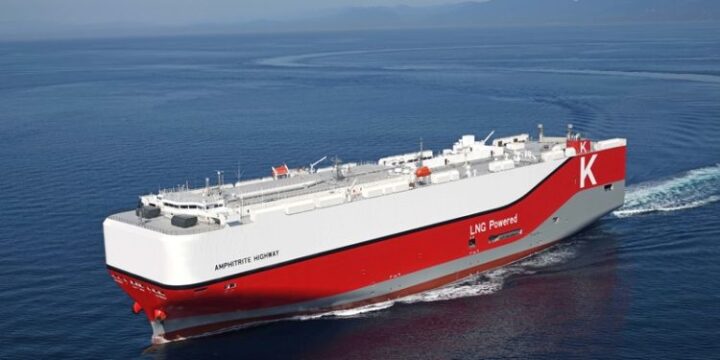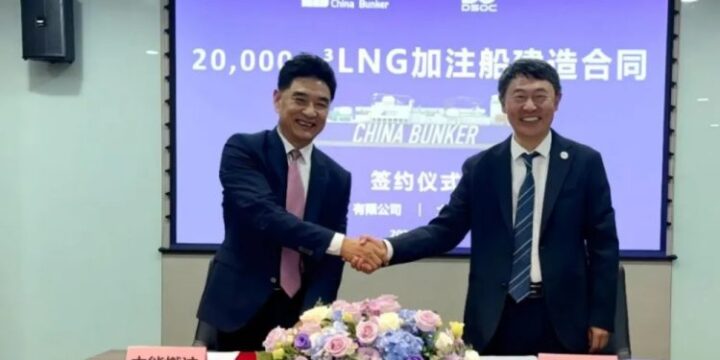August 11, 2025

The Responsible Shipping Initiative (RSI) and DNV have released a study, Decarbonization of the Short Sea Dry Bulk Fleet, funded in part by the Swedish Transport Administration.
The study finds that although Swedish cargo owners and charterers are committed to greener practices, progress is slowed by a lack of regulatory and financial incentives for smaller vessels. Europe’s short sea general cargo fleet is aging, with many ships nearing retirement and few replacements on order.
Since most are under 5,000 GT, they fall outside international and EU emissions rules, leaving shipowners with little motivation to invest in low-emission designs. This creates a strategic dilemma for RSI members who depend on this fleet to meet their climate targets.
The study was structured into three work packages:
- WP1 set emissions baselines for each RSI member using AIS-based modeling, identifying key cargo segments where green fleet renewal could have the biggest impact.
- WP2 assessed the costs of deploying low-emission vessels, calculating the “green premium” for e-methanol-powered ships versus marine gas oil, and explored measures, such as state subsidies and efficiency gains, to narrow the gap, engaging stakeholders through workshops.
- WP3 modeled the fleet renewal rate needed to align with climate goals and compared it with alternatives like biofuel blending and operational efficiency improvements, providing a roadmap for future decarbonization strategies.
Brief summary of the results
The recommendations for practical purposes had to be for each company to go out and try the various options in practice:
- understanding the potential for improved energy efficiency in their operations by engaging with select suppliers to collaborate on identifying and implementing measures.
- and, for companies with near-term zero emission goals, utilize the market interest in providing zero and low-emission services to gather information on costs and emissions of specific routes. WP2 gave an overview of costs but only a market dialogue will give true figures.
Underpinning these recommendations, was a recommendation to assign a special responsible person for coordinating maritime decarbonization actions. Then, a robust system for gathering emissions data from shipping companies. With that as basis, it would be possible to benchmark and track improvements over time.
Since voyage charters or contract of affreightments were common, this meant that if a shipowner invested in a more energy efficient fleet, it would not directly or necessarily transfer to emission reductions on the specific cargoes carried for a cargo owner. It would be necessary for a shipowner to display also the average emissions in the fleet over time.
Beyond these recommendations, the following general remarks can be made for project members and any company reliant on chartered vessels.
Anticipating the costs of a green fleet renewal
The project emphasizes the importance of renewing the aging fleet with more climate-efficient ships. This includes investing in new technologies such as sails, batteries, and air-lubricated hulls to reduce energy demand and emissions. Along with the additional costs of operating on new green fuels, this will undoubtedly raise transport costs. Estimates of the costs have been made for each project partner; in the order of 5-10€ per ton of cargo.
How to absorb or transfer the decarbonization costs further along the supply chain is the key task for transport buyers. One solution may be like already invented by Södra: the Conscious Delivery concept. This applies especially if the company has set a more ambitious targets than decarbonization by 2050 and wants to be ahead of the regulatory pace: this means sea transports may be more expensive than your competitors.
Planning for cost-effective regulatory compliance
With the introduction of new regulations such as the EU ETS and FuelEU, companies buying ship transport services must strategically plan compliance with these regulations. At the time of writing, the international regulation decided by countries in the IMO has not yet been concluded but will do so in the near future.
A compliance strategy includes understanding the cost implications and potential benefits of different compliance strategies. In WP3, for example it could be seen that emission reductions can take place using different strategies, of which just blending in biofuels in the existing fleet was the most expensive.
Collaborating across the value chain
The report highlights the need for increased collaboration between shipping companies, cargo owners, and fuel providers. This is to manage the greater risks that need to be taken. In particular, longer-term take-off agreements for fuel and potentially also longer-term charters for ships are discussed.
At the same time, it is difficult for cargo owners to take on such longer-term commitments as their contracts with their customers or suppliers are not long.
Better collaboration can also be enabled by translating long term ambitions into short term goals in each contract.
This was highlighted in one of the workshops with shipping companies and fuel suppliers: the shipping companies would find it easier to plan their fleet renewal, energy efficiency investments and fuel procurement if the expectations can be set clearly in the commercial and contractual discussions.
A major challenge in adopting low-emission fuels is the uncertainty shipowners face around long term costs and market demands. Cargo owners may also lack insights into fuel options and their impact on supply chain emissions. While the smaller vessels used by RSI members are not yet regulated they must report from this year on emissions to the EU, making it easier for cargo owners to collect data and set actionable targets
… said Hannes von Knorring, Principal Consultant and Global Cargo Owner Segment Lead at DNV Maritime.

